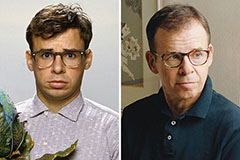Increased Access, Consistent Premium Quality
Recognized for its dedication to excellence, MyCigarsASAP.com offers a select collection of premium cigars from some of the most esteemed brands in the industry. Through its expansion to West Hollywood, the company proceeds to offer direct access to an extensive collection of luxury cigars, continuing the same exceptional quality control that has made it a favorite among cigar lovers.
Cigar Delivery West Hollywood
CALL (800) 654-7959
Customers in West Hollywood can pick from well-known brands such as: • Arturo Fuente – Delivering a broad array of carefully made cigars. • Montecristo – Celebrated for its creamy, harmonious mixtures that satisfy different preferences. • Cohiba – Esteemed globally for providing a robust, full-bodied smoking experience. • Davidoff – An emblem of elegance, offering cigars of unsurpassed uniformity and caliber. • My Father's Cigars – Providing strong, profound tastes that are influenced by Cuban cigar-making traditions. • Ashton – Acclaimed for its silky, polished taste, made from the top-grade tobaccos from the Dominican Republic. • Padron – Famous for its intense tastes and masterful artistry, including the sought-after 1964 Anniversary Series. • Romeo y Julieta – A traditional favorite famous for its even tastes and stable quality.
This wide assortment secures that MyCigarsASAP.com fulfills a broad spectrum of desires, with cigars originating from esteemed regions such as Nicaragua, the Dominican Republic, and Honduras.
Concentration on Freshness and High Standards
Grade is at the root of MyCigarsASAP.com’s operations. To assure that each cigar is delivered in pristine condition, the company applies meticulous quality control standards, including carefully monitored storage and individually picked inventory. Every request is handled meticulously, guaranteeing that the cigars are delivered fresh and full of flavor. As well, their team of cigar enthusiasts is at hand to give personalized suggestions, making each customer’s experience both personalized and informative.
Fast and Convenient Delivery to West Hollywood
With this current service enlargement, MyCigarsASAP.com affirms its position as one of the swiftest premium cigar delivery services in the region. Whether for a impromptu gathering, a intended function, or a peaceful evening at home, inhabitants in West Hollywood can now experience prompt cigar deliveries within 30 to 60 minutes of placing their order. This quick response delivers a superior convenience to West Hollywood’s cigar fans.
Cigar Delivery West Hollywood
CALL (800) 654-7959
About MyCigarsASAP.com
MyCigarsASAP.com is a California-based cigar delivery service determined to offer swift, uninterrupted access to a premium selection of cigars. With a emphasis on quality, freshness, and personalized service, the company has built a reputation as a reliable source for cigar enthusiasts throughout the area. Now, with expanded service to West Hollywood, MyCigarsASAP.com continues to lead the way in delivering first-class cigars efficiently and accurately.
For more knowledge or to arrange an order for rapid delivery, call (800) 654-7959.
Cigar Beginnings and Background: A Trip Through Periods
Cigars, often linked with affluence, heritage, and workmanship, bear a extensive history reaching centuries. The progression of cigars illustrates the convergence of ethnicities, exploration, and financial dealings. This article examines the compelling inception and past of cigars, charting their passage from indigenous ceremonies in the Americas to transforming into a planetary symbol of elegance.
The Primitive Genesis: Cigars in Pre-Columbian Cultures Cigars have their original foundation in the indigenous societies of the Americas. Historic cultures, including the Mayans, Aztecs, and Taínos, are documented to have consumed coiled tobacco greens. Archeological relics expose scenes of Mayans puffing on porcelain wares belonging to around the 10th century. The title “cigar” seemingly evolves from the Mayan designation “sikar,” which denotes to smoke.
In these old societies, tobacco was not only a casual product but also held sacred significance. Shamans and tribal leaders smoked tobacco during holy traditions, assuming it allowed them to connect with the spirit world. Tobacco was also used as medicine, offering soothing for various sicknesses, such as migraines and digestive issues.
Tobacco’s Emergence to Europe: Columbus and the New World The European chronicle of cigars started with Christopher Columbus’s appearance in the Americas in 1492. His crew discovered native people puffing twists of desiccated tobacco greens, an strange practice that intrigued them. Columbus and his men transported specimens back to Spain, marking the dawn of Europe’s connection with tobacco.
The practice of puffing quickly proliferated across Europe. Spaniards adopted it first, and by the 16th century, tobacco use developed into popular among European aristocrats. Early cigars were rudimentary in comparison to modern versions, but their fascination extended to Italy, Portugal, and France. Tobacco was also viewed as a miracle remedy, believed to alleviate a host of conditions from infections to tiredness.
Cuban Influence: Birthplace of the Modern Cigar Cuba’s place in cigar legacy is pivotal, altering tobacco from a local commodity into a international phenomenon. In the 17th century, Cuba turned into the nucleus of cigar making due to its optimal climate and fruitful soil, particularly in the Vuelta Abajo region. Cuban cigars quickly gained a renown for unsurpassed quality and mastery.
By the 1800s, the Cuban cigar industry was booming, and the term “Havana cigar” became synonymous with excellence. Proficient artisans, known as torcedores, crafted cigars by hand, polishing techniques that stay largely unchanged today. Many of the world’s most distinguished cigar brands, such as Montecristo, Cohiba, and Romeo y Julieta, attribute their foundation to this era.
The Extension to North America and Europe The demand for cigar s spread beyond Cuba’s borders by the 18th and 19th centuries. Tobacco plantations began arising in other Caribbean islands, such as the Dominican Republic and Jamaica, as well as parts of Central America, including Honduras and Nicaragua. These regions stand as cigar giants today, each injecting distinct characteristics to their products.
In Europe, Spain and the Netherlands evolved into notable consumers and producers of cigars. The Dutch founded a robust cigar industry, importing Cuban tobacco and combining it with domestic leaves to make singular styles. Meanwhile, cigar use in the United States emerged as related with status and masculinity. The rise of industrialization saw cigar factories expand across the U.S., particularly in Florida, where Cuban immigrants carried their mastery and traditions.
Cigars and Social Status: From Aristocracy to the Everyday Man Throughout heritage, cigars have been closely tied to status, wealth, and celebration. By the 19th century, cigars were a mainstay among European and American aristocrats. Monarchs such as King Edward VII of England were well-known cigar lovers, further amplifying their popularity among the elite.
In the United States, cigars became affiliated to political power and business success. Industrial magnates like Andrew Carnegie and John D. Rockefeller were often photographed smoking cigars, solidifying their image as emblems of wealth. Prominent figures such as Winston Churchill famously espoused cigars, supplementing to their prestige.
However, cigars were not confined to the upper class. The growth of the cigar industry led to the making of economical options, making cigars within reach to the working class. Cigar clubs and lounges developed, offering venues where people from all walks of life could indulge in a smoke.
The Cuban Embargo and the Rise of New Markets The Cuban cigar industry encountered a major shift in 1962 when the U.S. government, under President John F. Kennedy, enforced a trade embargo on Cuba. Cuban cigars, previously a regular among American cigar devotees, became illegal in the U.S., creating both deficiency and enigma around them. As a result, many Cuban cigar makers escaped to neighboring countries like the Dominican Republic, Nicaragua, and Honduras, where they continued their craft using Cuban-seed tobacco.
This geopolitical upheaval created new markets and contributed to the rise of premium cigars outside Cuba. Today, cigars from these regions are lauded for their quality, equaling Cuban cigars in flavor, construction, and diversity.
Cigars in Popular Culture and Cinema Cigars have secured their place in popular culture, often symbolizing power, victory, and sophistication. Hollywood endorsed the cigar as an icon, featuring it prominently in films. Characters like Tony Montana in Scarface and Winston Churchill in The Darkest Hour maintain the link between cigars and authority.
Moreover, cigars are a fixture at celebrations, marking occasions such as weddings, business deals, and the birth of children. Cigar lounges and clubs continue to serve as venues for socializing and networking, solidifying their cultural relevance.
The Modern Cigar Renaissance The late 20th and early 21st centuries have seen a reawakening of cigar culture. The 1990s “Cigar Boom” in the U.S. saw a reawakened interest in premium cigars, with new enthusiasts joining the scene. Artisanry, diversity in blends, and artisanal techniques have stimulated the modern cigar renaissance.
Craft cigar brands have earned popularity, offering singular blends that draw to a developing demographic of younger smokers. Additionally, the rise of cigar lounges and online cigar shops has made it less difficult for consumers to discover different varieties from around the world. Events like Cigar Aficionado’s Big Smoke further reveal the lasting fascination of cigars in contemporary culture.
Cigars and Sustainability: The Future of the Industry As the cigar industry develops, sustainability has become a emphasis. Environmental factors, including climate change and deforestation, impact tobacco cultivation. Many cigar manufacturers are utilizing eco-friendly practices by using sustainable farming methods and supporting reforestation efforts.
Fair labor practices are also becoming widespread, with companies assuring fair wages and safe working conditions for the farmers and artisans involved in cigar production. The emphasis on sustainability endeavors to safeguard the industry’s legacy while meeting the expectations of socially conscious consumers.
Conclusion: A Legacy of Tradition and Craftsmanship From the spiritual customs of indigenous tribes to the sumptuous lounges of today, cigars have journeyed a long and fabled path. Each inhalation of a premium cigar carries with it the legacy of generations of skill, tradition, and cultural significance. Whether appreciated by royalty, industrial tycoons, or modern-day fans, cigars continue to represent more than just tobacco—they encapsulate a lifestyle, a celebration, and a bond to history.
As the world of cigars progresses, one thing endures constant: the draw of sitting back, lighting up, and enjoying the skillful combination of tradition and innovation encased in each leaf.
The Cigar Creation Approach: A Trip from Former Days to Modern Day
This Cigar Manufacturing Process: An Journey from Past to Present
Introduction
A cigar, any timeless symbol of grandeur and cultivation, has a single rich history that bridges centuries and continents. From its early origins among local peoples to its modern incarnation as its own global industry, the process of crafting a cigar is the blend of mastery, research, and tradition. This article scrutinizes the intricate journey of cigar manufacturing, differentiating the methods of the past with those of today, and highlighting how innovation and heritage merge in this fascinating craft.
I. Historical Overview of Cigar Manufacturing
A. Early Origins of Cigars
The history of cigars traces back to the indigenous peoples of the Caribbean and Mesoamerica, who cultivated tobacco and used it in religious and medicinal practices. When Christopher Columbus arrived in the New World in 1492, he and his crew perceived the native Taíno people of Cuba and Hispaniola wrapping and smoking dried tobacco leaves. This practice fascinated the Europeans, who introduced tobacco back to the Old World, where it quickly gained popularity.
B. Traditional Cigar-Making Techniques
1. Tobacco Cultivation
In the early days, tobacco cultivation was one manual and labor-intensive process. Farmers utilized natural cycles and traditional knowledge to grow tobacco plants. The seeds were cultivated by hand, and the plants needed meticulous care to thrive.
2. Leaf Selection and Fermentation
After harvesting, the tobacco leaves received a natural air-curing process. They were mounted in curing barns to dry slowly, permitting the chlorophyll to break down and the leaves to transform into their characteristic brown color. Fermentation ensued, where the leaves were arranged in piles called pilones. The natural heat generated by microbial activity lowered harshness and highlighted the rich flavors.
3. Rolling Methods
Cigar rolling was the craft handed down through generations. Skilled artisans, known as torcedores, rolled cigars entirely by hand. They picked out filler leaves, bound them with a binder leaf, and coated the bunch with a high-quality wrapper leaf. This meticulous process required precision and an eye for quality.
C. The Role of Cuban Cigar Tradition
Cuba became closely associated with premium cigars due to its ideal climate and soil conditions, particularly in the Vuelta Abajo region. The country's cigar-making techniques set the standard for quality and craftsmanship. Cuban cigars were eagerly pursued, and the methods developed there impacted cigar production worldwide.
II. find more info Modern Cigar Manufacturing Process
A. Advances in Tobacco Cultivation
1. Genetic Selection
Modern agriculture has adopted genetic selection to refine tobacco plant qualities. Scientists and farmers partner to develop tobacco strains resistant to diseases and pests, and with desired flavor profiles. This creates more consistent and high-quality crops.
2. Modern Farming Techniques
Today, tobacco farming incorporates advanced irrigation systems, soil management, and crop rotation to maximize yield and quality. Precision agriculture technologies, such as GPS mapping and drones, aid monitor plant health and optimize resource use.
B. Leaf Processing Today
1. Fermentation Methods
While the fundamental principles of fermentation last, modern facilities control temperature and humidity with greater precision. This control maintains uniformity and enriches flavor development. Some producers use multiple fermentation cycles to refine the tobacco further.
2. Aging and Storage
Post-fermentation aging has grown into a critical step. Tobacco leaves are aged in controlled environments, sometimes for several years, to mellow the tobacco and boost complexity. Aging rooms are equipped with technology to retain ideal conditions.
C. Contemporary Cigar Rolling
1. Machine-Made vs. Hand-Rolled Cigars
The 20th century brought about mechanization to cigar production. Machine-made cigars apply homogenized tobacco leaf (HTL) binders and wrappers, granting mass production at lower costs. However, premium cigars endure to be hand-rolled, protecting the artisanal tradition.
2. Quality Control
Modern factories implement strict quality control measures. This includes regular inspections, draw testing to ensure proper airflow, and sensory evaluations. Technology aids but does not supplant the expertise of seasoned inspectors.
D. Innovations in Packaging and Distribution
Advancements in packaging materials shield cigars from environmental factors during shipping. Vacuum-sealed packaging, humidification devices, and sophisticated distribution logistics guarantee cigars reach consumers in optimal condition.
III. Comparing Past and Present Methods
A. Technological Advances
Technology has optimized many aspects of cigar manufacturing without lessening the importance of skilled labor. Mechanization manages repetitive tasks, while artisans dedicate themselves on quality and craftsmanship.
B. Maintaining Tradition in a Modern Industry
Despite technological progress, the essence of cigar-making continues rooted in tradition. Many producers highlight hand-rolled methods and traditional fermentation to preserve authenticity and cater to aficionados who value heritage.
C. Challenges and Opportunities
The industry confronts challenges like regulatory changes, health concerns, and market fluctuations. However, opportunities develop from expanding global markets, premiumization trends, and consumer interest in artisanal products.
IV. The Art of Cigar Making: Preserving Craftsmanship
A. The Role of the Torcedor (Cigar Roller)
Torcedores are revered figures in cigar factories. Their expertise governs the cigar's construction and performance. Training to become a master roller can take years, illustrating the complexity of the craft.
B. Apprenticeship and Skills Transfer
Many factories operate apprenticeship programs to pass skills to new generations. This affirms the survival of traditional techniques and sustains high standards in production.
C. Cultural Significance
Cigar-making is more than a business; it's the cultural heritage in regions like Cuba, the Dominican Republic, and Nicaragua. Festivals, museums, and tours recognize this legacy, drawing enthusiasts worldwide.
The cigar manufacturing process is the captivating blend of time-honored traditions and modern innovations. While technology has incorporated efficiencies and consistency, the heart of cigar-making resides in the hands of skilled artisans who safeguard a legacy that traverses centuries. Grasping this journey augments the appreciation of cigars, not just as products but as expressions of cultural heritage and craftsmanship.
 Rick Moranis Then & Now!
Rick Moranis Then & Now! Judd Nelson Then & Now!
Judd Nelson Then & Now! Heath Ledger Then & Now!
Heath Ledger Then & Now! Jurnee Smollett Then & Now!
Jurnee Smollett Then & Now! Jaclyn Smith Then & Now!
Jaclyn Smith Then & Now!